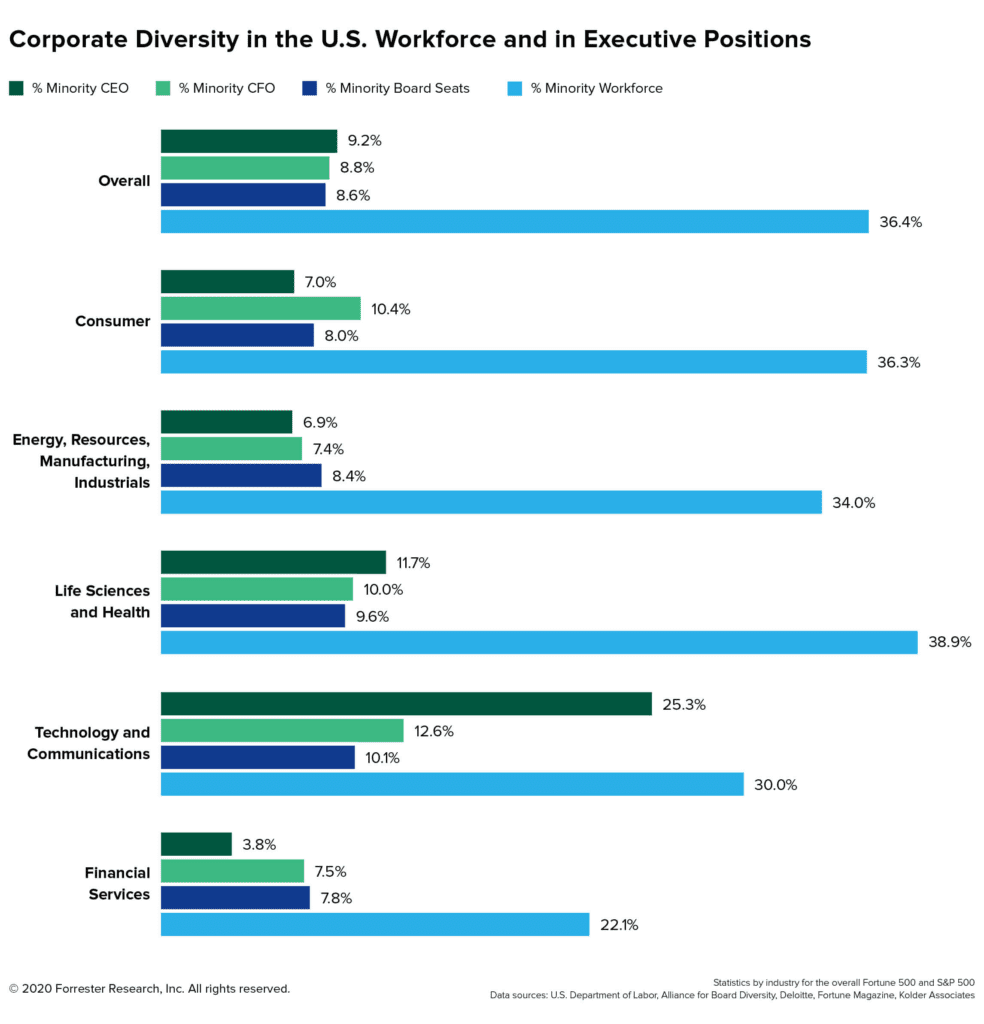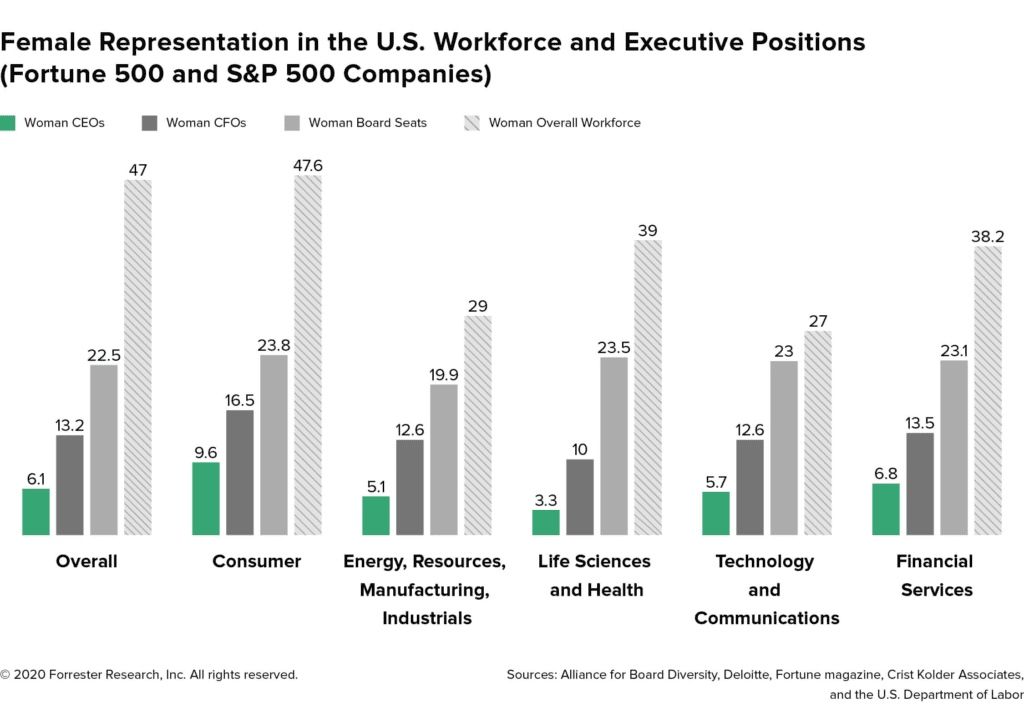
Ian Bruce, principal analyst at Forrester
If you had to summarize current corporate commitments to diversity and equality, it might boil down to this: all talk, no action.
That’s the conclusion I began to form when I compiled new data on broad levels of employee and executive diversity and equality across a wide variety of industries and sectors. My research was spurred by two events that occurred in 2020: the 100th anniversary in the U.S. of women’s right to vote (in the U.K., many women won the right to vote two years earlier, in 1918), and the tragedy of George Floyd’s killing in Minnesota by police.
Both events renewed long-simmering debates about women’s equality in society and corporate life, as well as racial equality and diversity around the globe. The corporate world actively joined in these debates, expressing solidarity with protests and the Black Lives Matter movements and professing brand values aligned with a drive for women’s rights.
Brands are quick to voice support for these causes, often expressed as carefully crafted brand values or eloquent statements of brand purpose. But are companies living up to their professed values and purpose? Are companies funding any actions to resolve racism and inequality, starting within their employee ranks, or is this lip service? Said more bluntly, is this cause washing?
One way to explore this is to look at existing levels of equality and diversity in different industries. Are companies hiring a diverse and inclusive workforce? Do organizations provide equal opportunities and career support for women and employees of color? Are they represented in the executive leadership team and on the board? Answering these questions can help illuminate the scale of discrimination and the steps companies need to take.
My research focused on Fortune 500 and S&P 500 companies, an international collection of organizations where publicly available data is readily available. I compiled data from Deloitte, Fortune magazine, the Alliance for Board Diversity, Crist Kolder Associates, and a wide variety of government data from the U.S. and U.K. I used the data to explore levels of overall diversity, C-level appointments and board makeup.
Racial diversity
The chart below shows minority representation across the Fortune 500/S&P 500 in a variety of broad industry sectors and shows the percent of minority CEOs, CFOs, Board seats and the underlying minority workforce in the U.S. (this last data point varies a lot by geography). Minorities make up about 37% of the U.S. workforce but account for less than 10% of CEOs, CFOs or board seats. Some industries, like financial services, do much worse than the overall average. Fewer than 4% of financial services CEOs are minorities. At the time of writing, there are only four black CEOs in the Fortune 500, and the number has declined in recent years.

Data from the U.K. shows similar results. About 6% of FTSE companies have a minority CEO, and 37% have no minority board representation.
Gender equality and representation
Shown below is a similar analysis for women’s representation across various industry sectors and different roles. About 47% of the U.S. workforce is female, yet only about 6% of Fortune 500/S&P 500 CEOs are women, and only 13% are CFOs. Women hold about 23% of board seats. Again, there’s considerable variation across different industries: Life sciences and healthcare have the worst representation, consumer goods does much better.

About 5% of CEOs of companies listed in the U.K.’s Financial Times Stock Exchange (FTSE) are female, with just under 20% of CFOs are women. Women hold about a third of board seats.
The brand crisis
An entirely reasonable reaction to this data is either disappointment or anger. It’s abundantly clear that either diversity and equality are not a top priority for businesses, or that endemic issues are at play that will be hard to overcome—or a combination of both. It is undoubtedly true that racial and gender discrimination have many complex, deep-rooted causes. It is also true that brands that profess equality and diversity values must honestly assess who they are and how they will promote change. Without this will and intent, and despite their often-sincere intentions, the pious promises we hear from brands can ring hollow.
The gulf between what brands say and what they do on these important issues is glaring and does not go unnoticed. It erodes trust and confidence. Data from Edelman’s long-running Trust Barometer research bears this out. Levels of trust in all brands have fallen to an all-time low. Brands need to do more, not say more, on these issues. This is hard work. These problems require a multi-year, well-funded, well-led effort, not merely a chief diversity officer with an intern, which can often seem like an empty gesture.
The route to achieving this aligns with a clear brand purpose and commitment to specific activities that deliver on that purpose. Start by looking inward and holding the organization accountable for its actions. Activate the brand in ways that visibly demonstrate an intention to be an agent for progress. This is a brand’s job, done with the support of the executive team. Brand leaders need to take the first step by being candid about how organizations stack up today and what steps they must take to resolve issues.
Brands, working with other, like-minded organizations, can form powerful coalitions to attack systemic problems and create a consensus for change. Loyal customers and an energized workforce will reward organizations seen to be living their values.
Forrester is a market research company that provides advice about the existing and potential impact of technology.
Favorite